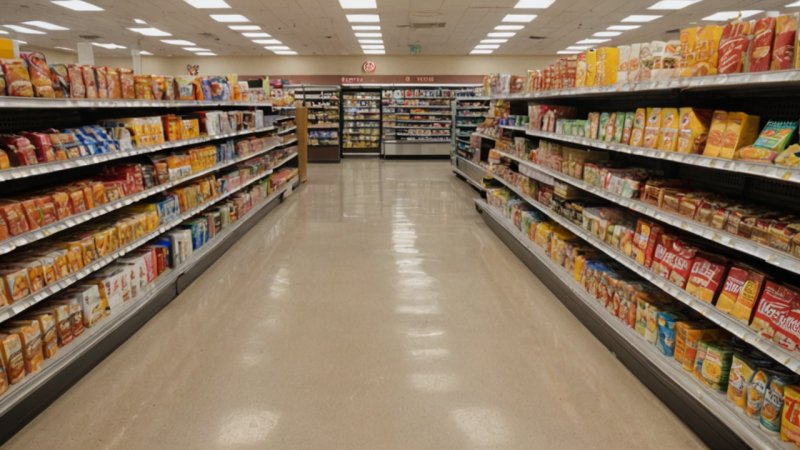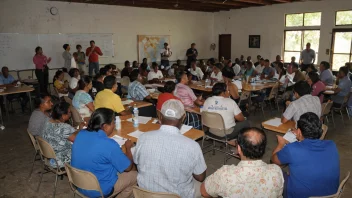Food deserts and food swamps are two critical concepts in understanding the relationship between access to nutritious food and poverty levels. Both terms describe areas in which residents face barriers to accessing healthy food options, but they differ in their characteristics and implications for public health and community well-being. This article will explore the definitions of food deserts and food swamps, examine their impacts on poverty levels, and highlight potential solutions to these pressing issues.
Defining Food Deserts
A food desert is typically defined as an area where residents have limited access to affordable and nutritious food. This is often due to a lack of grocery stores or supermarkets within a certain radius, particularly in low-income neighborhoods. Food deserts are characterized by the absence of fresh produce, whole grains, and other healthy food items, leading to a reliance on convenience stores that primarily sell processed foods.
Pros and Cons of Food Deserts
- Pros: Understanding food deserts can help policymakers identify areas in need of intervention. By recognizing these zones, community organizations can work to establish farmers' markets or mobile grocery stores to improve access.
- Cons: The primary drawback of food deserts is the negative impact on health. Residents in these areas often experience higher rates of obesity, diabetes, and other diet-related diseases due to limited access to healthy foods.
Defining Food Swamps
Food swamps, on the other hand, refer to areas where unhealthy food options are more readily available than healthy ones. In food swamps, there may be an abundance of fast food restaurants, convenience stores, and other outlets that primarily sell high-calorie, low-nutrient foods. Unlike food deserts, food swamps may have grocery stores, but these stores often offer limited healthy food options.
Pros and Cons of Food Swamps
- Pros: Identifying food swamps can help communities focus on the quality of food available rather than just the quantity. This understanding can lead to initiatives aimed at improving the nutritional quality of food options in these areas.
- Cons: The prevalence of unhealthy food in food swamps contributes to poor dietary habits and health disparities. Residents may face numerous temptations that make it difficult to choose healthier options, exacerbating issues related to obesity and chronic diseases.
Comparing the Impact on Poverty Levels
Both food deserts and food swamps have significant implications for poverty levels, but they do so in different ways. Food deserts primarily affect individuals' ability to access healthy food, while food swamps influence the choices available to them.
Health Outcomes
Residents of food deserts often face significant health challenges due to limited access to nutritious foods. This can lead to higher rates of chronic diseases, which can increase healthcare costs and further entrench individuals in poverty. In contrast, those living in food swamps may have access to numerous food outlets, but the quality of food available is often poor, leading to similar health issues.
Economic Impact
Food deserts can contribute to economic stagnation in communities by discouraging investment in grocery stores and local businesses. Conversely, food swamps may attract fast food chains and convenience stores, which can create jobs but often do not provide sustainable economic growth or support local agriculture.
Social Dynamics
Food deserts can contribute to feelings of isolation and frustration among residents who are unable to access healthy food options. This can lead to social unrest and a lack of community cohesion. Food swamps, on the other hand, may create a culture of convenience that prioritizes unhealthy eating habits, impacting social norms around food and nutrition.
Potential Solutions
Addressing the challenges posed by food deserts and food swamps requires a multifaceted approach. Some potential solutions include:
- Establishing community gardens and urban farms to increase local access to fresh produce.
- Partnering with local farmers to create food co-ops that offer healthy options at affordable prices.
- Implementing educational programs that promote healthy eating and cooking skills.
- Advocating for policy changes that incentivize grocery stores to open in food deserts and improve the quality of food in food swamps.
Conclusion
Food deserts and food swamps represent two sides of the same coin, both contributing to the ongoing challenges of food insecurity and poverty. While food deserts limit access to healthy foods, food swamps offer an abundance of unhealthy options that can lead to poor dietary choices. Addressing these issues is crucial for improving the health and well-being of communities, particularly those in low-income areas. By understanding the differences and similarities between food deserts and food swamps, individuals and organizations can take actionable steps to foster healthier food environments and combat poverty.






